230201 1L2L0X0A_(I), http://farbe.li.tu-berlin.de/AEFI.HTM or
http://color.li.tu-berlin.de/AEFI.HTM
For this main page with general information and special images
of the corresponding image page with 10 colour series, see
AEFI in English,
AGFI in German.
For the previous main page, see
AEEI in English,
AGEI in German.
For the next main page, see
AEGI in English,
AGGI in German.
For links to the chapter A
Colour Image Technology and Colour Management (2019), see
Content list of chapter A:
AEA_I in English or
AGA_I in German.
Summary of chapter A:
AEA_S in English or
AGA_S in German.
Example image part of 26 parts AEAS to AEZS:
AEAS in English or
AGAS in German.
Chapter A: Colour Image Technology and Colour Management (2019),
Main part AEFI
1. Introduction and goals.
ISO/IEC 15775 and ISO 9241-306 define the device and elementary hues.
The elementary hues play a large role in applications, for example
in architecture, design and colour vision. Up to know there is no vision
model which explains the elementary hues on the basis of the receptor
sensitivities LMS according to the Technical Report CIE 170.
The definition of device (d) and elementary (e) hue circles will be given.
There are circles with 24, 16, and 32 steps, and for the device and elementary hues.
For displays and in print the output will be discussed.
The hue output shall not change for the 15 standard-contrast steps CYP1 to CYP15
of ISO 9241-306. This is not completely possible with only a gamma change,
for example of the elementary hue blue. For an improved hue output
a 3D-output linearization is recommended.
2. Definition of device and elementary colours and hues
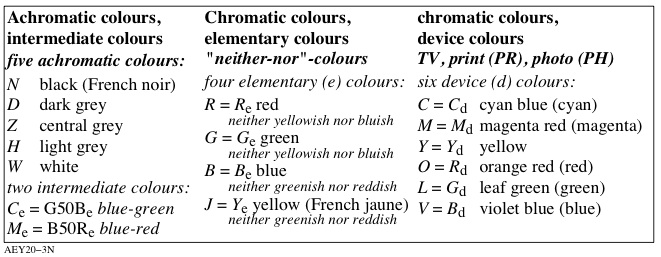
Table 1 - Device and elementary colours of standard offset ORS18 according to ISO/IEC 15775
For the download of this Table in the VG-PDF format, see
AEY20-3N.PDF.
Table 1 shows the device colours (index d) and the elementary colours (index e)
and the visual criteria for the elementary colours. ISO/IEC 15775 uses for example the letters
O, L and V instead of Rd, Gd, and Bd which indicate the difference to the letters R, G, and B.
However, in this paper we prefer to use the index d or e to distinguish between device and
elementary colours or hues. The elementary hues are one basis for a device-independent colorimetry
and the definition of the rgb* devices. These devices produce a device-independent hue output
on any device. Further steps will be discussed in the following.
3. Device and elementary colours for ORS18 and TLS00
The following Fig. 1 and 2 show a linear relation between the CIELAB (L*, a*, b*)
and the adapted (a) CIELAB (C*ab,a, L*) data. If the CIELAB (a*, b*) coordinates of
black N and white W are known one can also transfer back from the adapted coordinates.
If the CIELAB (a*, b*) coordinates of black N and white W are both cero,
then the CIELAB and adapted CIELAB coordinates are equal.
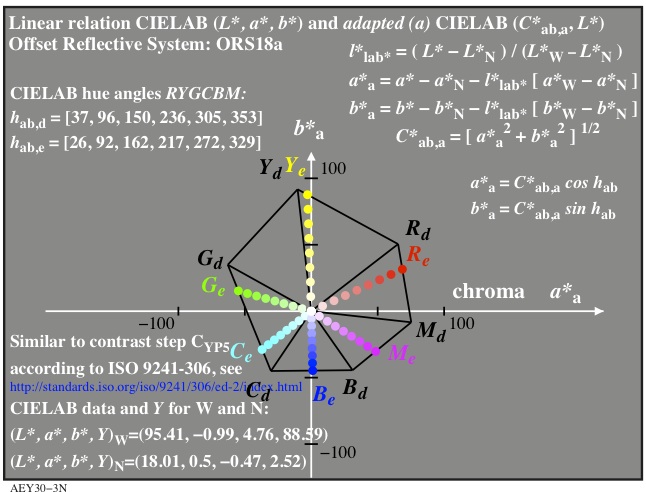
Fig. 1 - Device and elementary colours of standard offset ORS18 according to ISO/IEC 15775
For the download of this Figure in the VG-PDF format, see
AEY30-3N.PDF.
Fig. 1 shows the device colours (RYGCBM)d of standard offset according to ISO/IEC 15775.
The elementary colours (RYGB)e are produced in standard offset for the four
elementary hue angles hab,e = 25, 92, 162, and 271 of CIELAB. In addition the mean hue angles
hab,Ce = 217 = 162+(271-162)/2 and hab,Me = 329 = 271+(385-271)/2 are given
for the intermediate colours Ce and Me.
Most of the so called RGB printers and professional CMYK printers use similar device colours
compared to standard offset.
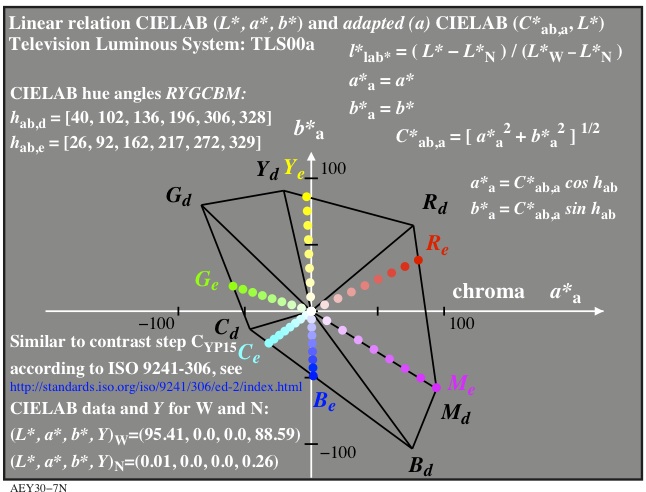
Fig. 2 Device and elementary colours of the standard sRGB display according to IEC 61966-2-1
For the download of this Figure in the VG-PDF format, see
AEY30-3N.PDF.
Fig. 2 shows the device colours (RYGCBM)d of the standard sRGB display according to IEC 61966-2-1.
The elementary colours (RYGB)e are produced on the sRGB display for the four elementary hue angles
hab,e = 25, 92, 162, and 271. In addition for the sRGB display the hue mean angles
hab,Ce = 217 = 162+(271-162)/2 and hab,Me = 329 = 271+(385-271)/2 are given for the intermediate
colours Ce and Me.
Fig. 1 and 2 shows some equations to calculate the CIELAB coordinates with the index a (= adapted).
If the CIELAB (a*, b*) coordinates of black N and W are known one can transfer between the
CIELAB and the adapted CIELAB data in both directions.
In Fig. 2 the standard sRGB device produces the colours Bd and Md with a high chroma.
This is the case in a dark room, if no room light is reflected on the display. In offices with a standard
luminance reflection of Lr=2,5% (CIE tristimulus value Y=2,5
compared to the white reference Y=90)
the chroma C*ab,a decreases by about 10%. This chroma is still much larger compared
to the chroma C*ab,a of standard offset ORS18a, compare Fig. 1.
The different chroma between standard offset ORS18a and the standard display sRGB indicates that a
colorimetric reproduction is not possible with the same L*, C*ab, and hab values
on the display and in print.
A comparison of Fig. 1 and Fig. 2 shows similar chroma Cab,a for the elementary blue Be.
However, the lightness L* on the screen is larger. Both values (L* and C*ab,a)e
are needed for the comparison and the reproduction.
The mean colour difference between ORS18 in Fig. 1 and TLS00 in Fig. 2 is about delta_E*ab = 20.
This difference is much larger compared to delta_E*ab = 1
which is near the visual recognition.
4. Device-hue circles with 24 steps and elementary-hue circles with 16 steps
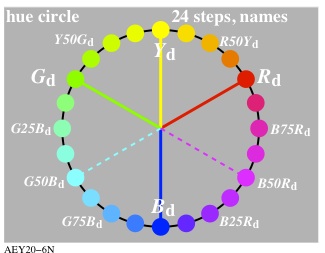
Fig. 3 - Device-hue circle of standard offset ORS18 according to ISO/IEC 15775
For the download of this Figure in the VG-PDF format, see
AEY20-6N.PDF.
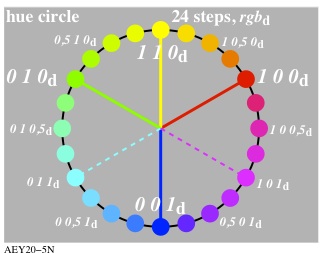
Fig. 4 - Device-hue circle of standard offset ORS18 according to ISO/IEC 15775
For the download of this Figure in the VG-PDF format, see
AEY20-5N.PDF.
Fig. 3 and 4 shows two device hue circles with 24 steps. The hue text H*d is given in Fig. 3,
and the rgbd data are given in Fig. 4.
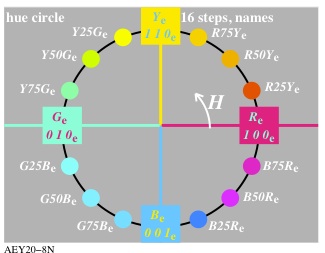
Fig. 5 - Elementary-hue circle of standard offset ORS18 according to ISO/IEC 15775
For the download of this Figure in the VG-PDF format, see
AEY2-8N.PDF.
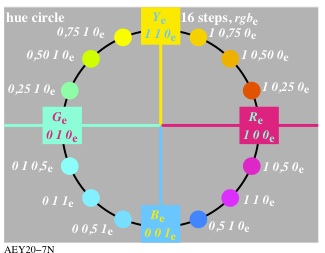
Fig. 6 - Elementary-hue circle of standard offset ORS18 according to ISO/IEC 15775
For the download of this Figure in the VG-PDF format, see
AEY20-7N.PDF.
Fig. 5 and 6 show two elementary hue circles with 16 steps. The hue text H*e is given in Fig. 5,
and the rgbe data are given in Fig. 6. For the elementary hue output according to the visual
elementary-hue criteria in Fig. 1 there is a transfer from the device data rgbd to the data
rgbde (new device data for the elementary hue output).
The rgbde data are device-dependent.
A comparison of the device hue (Fig. 3 and 4) and elementary hue (Fig. 5 and 6) circles shows an increase
of the hue angle range from 60 to 90 degree for the range Re to Ye and Ye to Ge. This is the
lighter range of any hue circle.
At the same time there is a decrease of the hue angle range from 120 to 90 degree for the ranges between
Gd via Cd to Bd, and Bd via Md to Rd. This is the darker range of any colour circle.
This change is used in the Natural Colour System NCS, and is appropriate for applications
by at least two reasons:
- The CIELAB chroma of surface colours is for the darker side between Ge via Be to Re roughly half
compared to the lighter side. Therefore the ratio colour difference/hue angle difference
delta_E*ab/delta_hab is roughly half for the darker side. Therefore it is appropriate to reduce
the hue angle range from 120 to 90 degree for the darker side and to increase the hue angle range
from 60 to 90 degree for the lighter side.
- in many applications, for example house and wall paintings, clothes and advertising, the lighter
colour side is much more important compared to the darker colour side.
Therefore the elementary (e) hue scaling by rgbe is more appropriate compared to the present
device (d) colour scaling by rgbd.
5. Hue circles with 32 hues out of 48 hues of AE49 according to ISO 9241-306
Only 32 of the 48 steps which are included in the test chart AE49 of ISO 9241-306 are
used in Fig. 7 and 8.

Fig. 7 - Intended output of a 32 step elementary hue circle with rgbe values
For the download of this Figure in the VG-PDF format, see
AEF60-1N.PDF.
Fig. 7 shows the values rgbe for the elementary hues (left) and the position within the
test chart AE49 of ISO 9241-306 (right). The AE49 position is given in terms of row & column
for any hue sample.
According to ISO 9241-306 for the given rgbe values the elementary hues shall
appear on any device. Then the hue output is completely device independent.
However, up to now this is usually not fulfilled, especially not for the elementary hue Blue Be.
In applications the appropriate hue output is usually more important compared to the output of
lightness and chroma.
For the hue range green via blue to red only every second step of the 48 step circle of AE49 is taken.
This reduces the 48 steps to 32 steps. For most surface-colour applications this choice is useful.
The lighter yellowish steps are more important compared to the darker bluish steps
which are usually less chromatic.
However, the sRGB-device light colours are in the range blue to red much more chromatic than
for example the offset-surface colour. This special application case is not further discussed here.
One may take every instead of every second hue step of the 48 steps of AE49
in the range Be to Re. This is only valid for the sRGB display and not for surface colours.
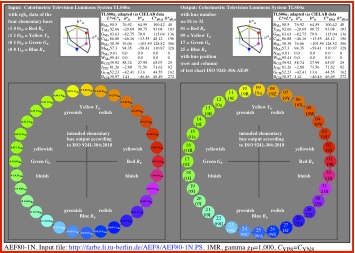
Fig. 8 - Intended output of a 32 step elementary hue circle with rgbd values
For the download of this Figure in the VG-PDF format, see
AEF80-1N.PDF.
Fig. 8 shows the values rgbd to produce the intended elementary hues on a standard sRGB device
(left). The positions on the right side are the same as in Fig. 7. However, the
transfer rgbde (change of device hue to reach the intended elementary hue) changes the
output colours at all positions. The result is an improved elementary hue output in Fig. 8
compared to Fig. 7. The output of Fig. 8 agrees much more with the visual criteria for the
elementary hue output, which are given in Fig. 1.
6. 32 step hue circle with 15 ISO-contrast steps CYP1 to CYP15 according to ISO 9241-306
Only 32 of the 48 steps out of the test chart AE49 according to ISO 9241-306
are used in Fig. 9 and 10.

Fig. 9 - Intended output of a 32 step elementary hue circle for different gamma gP
For the download of this Figure in the VG-PDF format, see
AEF8L0N1.PDF.
Figure 9 shows changes for the standard contrast step CYP8 (SDR) with gP=1,000.
Other contrast steps are CYP1 (LDR), CYP5 (BDR), CYP8 (SDR), and CYP15 (HDR).
Some text explains the figures and leads to further information by different links.
The abbreviation stand for:
L=Low, B=Office (Büro), S=Standard, H=High, DR=Dynamic Range.

Fig. 10 - Intended output of a 32 step elementary hue circle for 15 contrast steps CYP1 to CYP15.
For the download of this Figure in the VG-PDF format, see
AEF9L0N1.PDF.
Fig. 10 shows the standard contrast step CYP8 (top left). 15 different contrast steps between
CYP1 and CYP15 are given. The grey background and some hues change visually as
function of the contrast step.
A simple gamma change seems a first solution for the goal
to produce the elementary hues for any contrast step. The more complex method
of 3D-output linearization seems better for the elementary hue output.
The partition of the visible spectrum in RG and YB chromatic values can be described
as function of the wavelength.
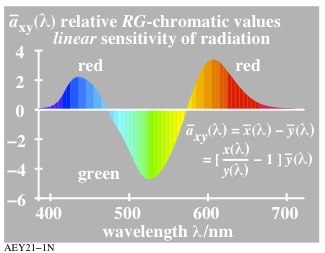
Figure 11 shows the partition of the visible spectrum in RG chromatic values
as function of the wavelength.
For the download of this Figure in the VG-PDF format, see
AEY21-1N.PDF.
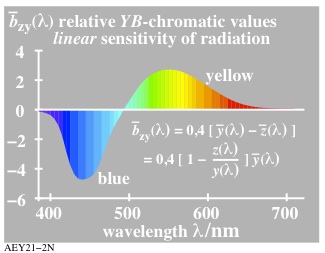
Figure 12 shows the partition of the visible spektrum in YB chomatic values
as function of the wavelength.
For the download of this Figure in the VG-PDF format, see
AEY21-2N.PDF.
-------
For the archive information (2000-2009) of the BAM server "www.ps.bam.de"
(2000-2018)
about colour test charts, colorimetric calculations,
standards, and publications, see
indexAE.html in English,
indexAG.html in German.
Back to the main page of this TUB web site (NOT archive), see
index.html in English,
indexDE.html in German.